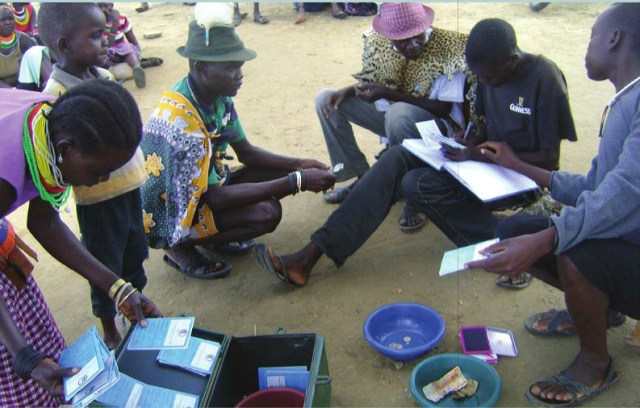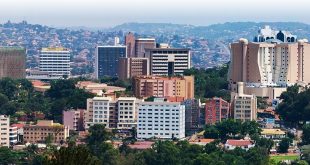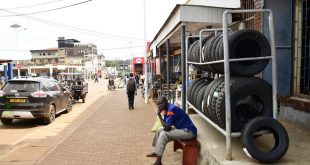
Regarding the numbers of Ugandans considered poor, the World Bank says whether the national figure of the extreme poor of 19.7% is considered or the international poverty figure of 34.6% is considered, Uganda has done well and better than most countries in sub-SaharanAfrican in combating extreme poverty.
Speaking at the launch of the report, the World Bank Country Manager Christina Malmberg Calvo described Uganda’s progress in reducing poverty as an “African success story”. But she was concerned that the gains remain shaky.
“Most Ugandans are either poor or vulnerable to poverty. For every three families who escape poverty, two fall back in,” she said.
The vulnerability is mainly a result of the unreliable causes of what the World Bank calls `Monetary Poverty’- the lack of income resources.
“Uganda’s formula for success is one that works especially well when conditions are favourable, particularly in agriculture,” says the report.
It adds: “And luck has been on Uganda’s side in the last decade.”
Agriculture has been the main driver of poverty reduction among households, accounting for 79% of the national poverty reduction observed between 2006 and 2013.
But almost 60% of this agricultural income growth of households is attributed to favourable weather, high commodity prices in the region, and positive changes in supply and demand conditions outside of Uganda. The World Bank calls these causes of income growth “luck” and Lawrence Bategeka, the Vice Chairperson of the Parliamentary Committee on the National Economy and MP for Hoima Municipality agrees. He says Uganda “is lucky that arable land is still available as a resource”.
He says the government needs to implement policies that will enable the majority of Ugandans use the land profitably.
“When you compare our coffee production to that of Vietnam which in 1990 was producing one million bags and is now producing close to 30 million bags …Uganda is still stuck at 3.6 million bags of coffee exports,” he says.
He says this means that the impact of poverty reduction in Vietnam is significant because everybody is involved in the process of coffee production and that has become a means of reducing poverty.
Commenting on the unequal regional distribution of poverty, Ggoobi said the north, which was ravaged by a 20-year long rebellion until the late 1990s, is starting from a low baseline. Before 2005, up to 68% people there were classified as poor by the ‘poor standard’ we have been using to measure poverty in Uganda.
“But they have been one of the best performing sub-regions in fighting poverty,” Ggoobi says, “It has now reduced to an average of about 44% in recent years and that is good performance despite the raft of interventions from the government where, thanks to corruption, resources have been diverted.”
He blames the extreme poverty in the east on the high fertility rates there — where households have up to nine children.
He says Kampala city and its 1% poor people can be explained by the fact that it is where over 65% of the GDP is generated. “This masks a lot the realities in the city. But the truth is that poverty is quite high, especially among the slum dwellers.”
The future of poverty
Faced with such stark realities, the World Bank report says the choices for Uganda are clear. It says Uganda needs to invest more in agriculture and notes that although it has contributed most to poverty reduction, the annual mean growth rate of the sector is just 2.0%which is low compared to the Sub-Saharan average of 5.4%.
The report notes that the government has got some things right already and mentions ensuring peace in northern Uganda, opening private markets for produce, and contributing to political stability in the Great Lakes region. Luck, good weather, and positive international prices for agriculture commodities complete the positives.
The report says farmers, especially in north and eastern Uganda need extension services, better health, education, and better farm inputs, increased modernization, and credit. The World Banks paints three scenarios for the future of poverty eradication in Uganda depending on how the government tackles these issues.
In one scenario, the government can continue with business as usual. If luck continues on its side, the country can record consumption growth similar to the current of 2.5% per year. At that rate, it could reduce the number of people below the international poverty line of per capita consumption of US$1.90 per day to 12% from the current 34.7% by 2030. Any consumption growth below that would mean worse figures than present.
On the other hand, the government can drive Uganda to achieve per capita consumption growth of 4% per year as happened between 1993 and 2000. If this consumption growth happens among both the current rich and the extreme poor, then only 4% of Ugandans will be living in extreme poverty by 2030, according to the World Bank. At that rate, no one would have to migrate to western Uganda to get rich.
****
editor@independent.co.ug
 The Independent Uganda: You get the Truth we Pay the Price
The Independent Uganda: You get the Truth we Pay the Price


